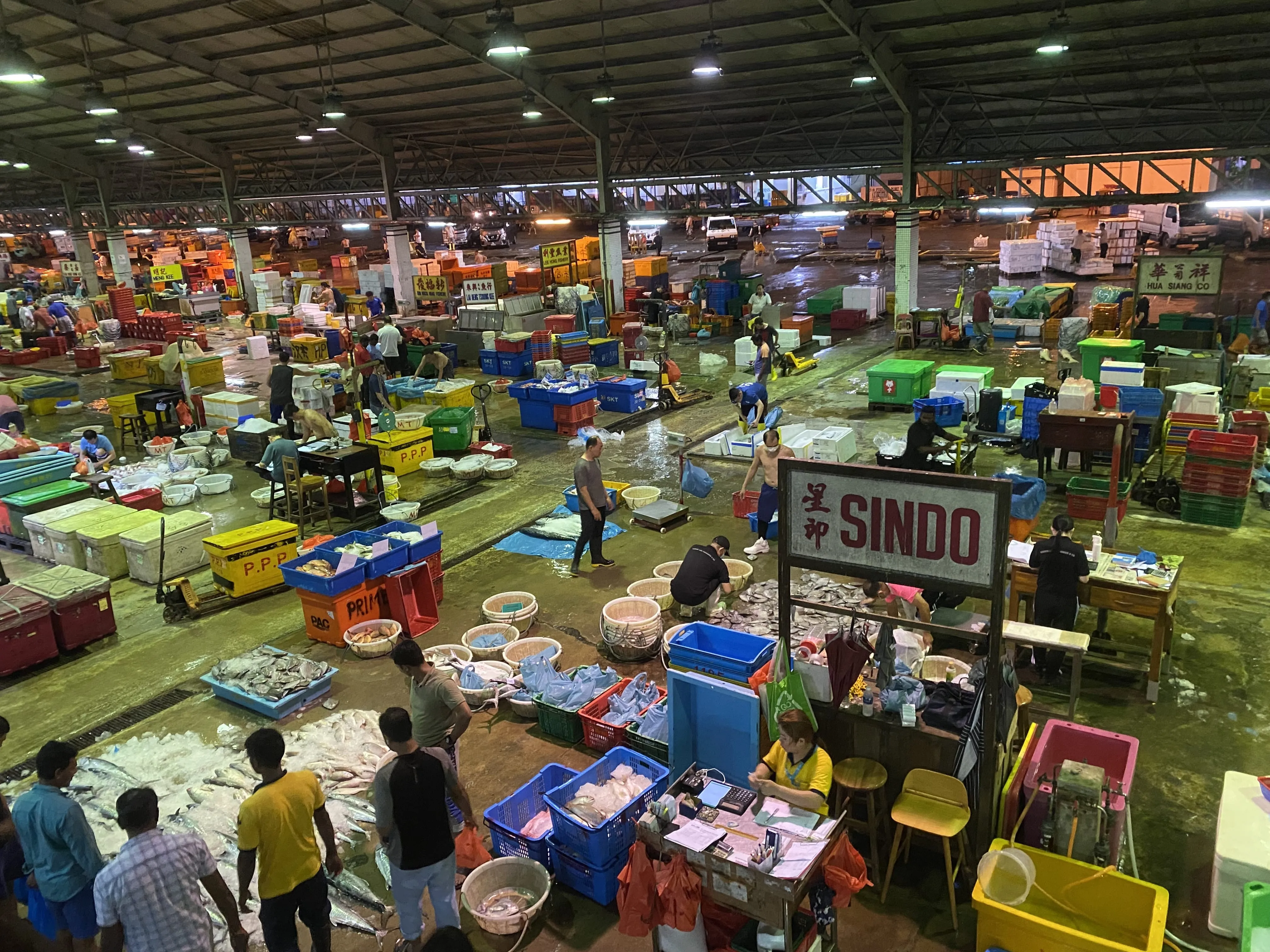December 1, 2023
5 things you may not know about Jurong Fishery Port in 2024
Learn about the magic that happens at Singapore’s fishing ports, and what it takes to bring seafood to your dining table
Learn about the magic that happens at Singapore’s fishing ports, and what it takes to bring seafood to your dining table
Just a few kilometers west of the coast highway, you can see the Port Of Singapore stretching along the coastline. Massive cranes loom over stacks of containers, which are separated by straight, long roads and smaller yellow gantries.
I joined a tour of Jurong Fishery Port, hosted by the team at Port 65. It was a unique experience that helped me learn more about how live seafood is brought to Singapore, and what happens in this lively nocturnal market.
With helpful guidance from the Port65 team, here’s some of the interesting facts I’ve learnt.
70-80% of Singapore’s chilled seafood comes through Jurong Fishery port
Fishing ships from all around the world arrive at the docks, and drop off their live catch in large plastic containers. The 5.1 hectre space market comes alive before midnight to receive the catch, pour them out and prepare them for selling.
Most of the fish that come to Jurong Fishery port are seasonal. Some species can be found year-round, while others are only available for a few weeks each year. As a result, the price of fish can vary greatly depending on how much was caught that day. It takes considerable experience to accurately determine whether you've made a good purchase or not.
Each market vendor specializes in different seafood catch
There’s no such thing as a fish, in the sense that we often don’t think about how wildly different the biology is of the seafood we eat. But the reality is not lost here at the fishery port; Vendors have invested in different equipment, and practices to properly prepare their seafood.
For example, to sell salmon, tilapia or other chilled fish, you’d need ice machines to pack the fish with shaved ice. If the fish are still alive (known as live catch), you’d need water tanks and filtration systems of different sizes. You’d also need package the live fish in such a way that once bought, the fish stay alive in the trucks until it reaches its buyer’s location.
There’s no official start and end time for the market
The tour started at 11:30pm, and the vendors started to sort their deliveries by midnight onwards, but there was no real schedule to the market as a whole.
People who were looking for the best catch came early. Since this usually means they are willing to pay more for fish, vendors keen to cater them would try to open their business early enough to catch their patronage.
The bulk of the market activity occurs between 2-5am, which is also when many buyers come to collect the fish and transport them to wet markets around Singapore. This allows the fish to be ready before the markets open. By the time the sun rises, most vendors would have already closed for the day.
Anyone can come here to buy fish
Monday morning (12am to 6am) is considered a rest day since not many customers come on this day. So if you do come on a Monday, don’t expect to see much activities there on that day.
All you need is your passport/ IC. Its generally recommended for you to wear shoes with a good grip as the floor is quite wet.
However, not all vendors sell small quantities directly to consumers. Some vendors may be willing to do so but may require a minimum order quantity for newcomers. Others may find it a hassle to hand-hold you through the buying process, or choose to only sell to regulars at the market that they know.
Keep in mind that most of the time the fish sold here would not be scaled, cut, or gutted. You’d have to find other ways to process the fish yourself.
If you come to the market, you'll often find migrant workers who come to buy fish to bring back to their dorms. It's a big win for them to get a convenient source of large amounts of fresh fish at low prices.
Checking eyes and gills to check freshness won’t always work
Most of the fish are too fresh for this method to work. But there is a difference between a fish that was caught a couple hours ago, to a fish that was caught yesterday.
Most experienced vendors and buyers at the market use a variety of methods to check a fish’s freshness, but one of the way is to check how firm the fish is.
Sea creatures must create a certain level of pressure and buoyancy in their body to survive and move around in deep water pressure. As a result, the flesh of a freshly killed fish will be firm to the touch and maintain its streamlined shape. If the fish's flesh feels soft or limp to the touch, it has likely been dead for a longer period of time.
Final thoughts
As I spent time in the market it was obvious that the fishing industry is a tough one. While we are fast asleep, the people here slog away hauling heavy containers of fish and ice, cleaning away an endless slurry of seawater and seafood waste to keep their stalls ready for the next customer.
I’d highly recommend anyone who would like to know more about the fishery industry to come down once and experience the hustling that happens everyday at the Jurong Fishery Port.



